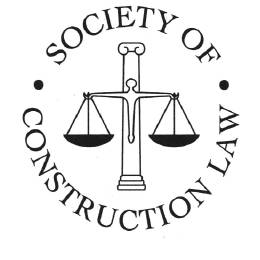Foreword
Hamish Lal, Akin Gump Strauss Hauer & Feld and Chair, Society of Construction Law


THIS is an excellent publication (on many levels) and I am delighted that I have been afforded a kind opportunity to make a contribution. Patently, readers will see that the publication has attracted a number of compelling articles covering noteworthy and important issues for all of us involved in construction law.
I congratulate and thank warmly all the authors for giving us a set of articles that one wants to read, keep to hand and make use of in submissions (whether in adjudication, arbitration, dispute boards or litigation). I want to highlight three specific and fundamental issues that are unavoidable for all of us:
- The question of whether a collateral warranty is a construction contract within the meaning of s.104(1) of the Housing Grants (Construction & Regeneration) Act 1996 which was considered for the first time by the Court of Appeal in Abbey Healthcare (Mill Hill) Ltd v Simply Construct (UK) LLP.
- On 28 April 2022, The Building Safety Bill received Royal Assent and has become the Building Safety Act 2022. It is important to note straightaway that this act amends, amongst others, the Defective Premises Act 1972, the Landlord & Tenant Act 1985, the Building Act 1984, the Health and Safety at Work etc. Act 1974, and the Regulatory Reform (Fire Safety) Order 2005.
- Whether pre-arbitration procedural requirements have been fulfilled is a question intrinsically suitable for determination by an arbitral tribunal or whether the arbitral tribunal has no (threshold) jurisdiction? This was discussed recently by the Hong Kong Court of Appeal in C v D (2022) HKCA 729.
Abbey Healthcare (Mill Hill) Ltd v Simply Construct (UK) LLP
Abbey Healthcare is the leading legal authority on this specific issue. The Court of Appeal did not overrule the approach followed by the Court of First Instance in Parkwood Leisure Ltd v Laing O’Rourke Wales and West Ltd but the Court of Appeal decision was a majority decision with Lord Justice Stuart-Smith writing a powerful dissenting judgement.
There is a lot of important practical and legal detail yet to be issued but it is clear that the new body called the Building Safety Regulator will be established within the Health and Safety Executive.Coulson LJ (with whom Peter Jackson LJ agreed) concluded that by the same process of reasoning as Akenhead J adopted in Parkwood, that the terms of the collateral warranty made it a construction contract as defined in s.104(1) because Simply Construct warranted that it ‘has performed and will continue to perform diligently its obligations under the contract’. Thus, the majority in the Court of Appeal considered that that warranty covered two separate things:
- It plainly set out the standard to which the construction operations would be carried out. That was by reference to the detailed terms of the building contract. That point is emphasised in clauses 4.1(b) and (c). To that extent, the building contract is the marker or standard denoting the level of quality that Simply Construct were required to achieve.
- There is also a warranty of both past and future performance of the construction operations. Simply Construct were warranting that, not only have they carried out the construction operations in accordance with the building contract, but they will continue so to carry out the construction operations in the future. That is an ongoing promise for the future, of the kind to which I have already referred. As a matter of common sense, therefore, it seems to me that that is an agreement for the carrying out of construction operations. It is not a warranty limited to the standard to be achieved; neither is it a warranty limited to a past or fixed situation. It is a warranty as to future performance. It is that that differentiates the Abbey collateral warranty from a product guarantee.
Standing back a little, two of the three judges in the Court of Appeal were convinced that a ‘broad’ interpretation was needed in respect of section 104 of the construction act. The dissenting judgement did not agree and found that the collateral warranty construed commensurate with English law was not a construction contract. Several paragraphs from the powerful dissenting judgement of StuartSmith LJ are noteworthy:
- [94] There is a danger in attempting any further description or paraphrase of what s.104(1) says or means. In my judgment it is clear on its face both as to what it says and as to what it means. Equally, I find it unhelpful to adopt epithets such as ‘broad’ when describing how it is or should be interpreted. The question in every case will be whether an agreement under consideration falls within the ambit of s.104(1) as that may reasonably be understood.
- [103] For these reasons, I consider that the defining characteristic for a contract to fall within s.104(1) of the act is that it should be a contract ‘for’ one of the activities listed in the subsection. The section is clearly drafted and the use of the word ‘for’ is conventional English usage. Given its clarity there is no call for a strained or purposive interpretation of the section.
Building Safety Act 2022 (BSA)
The BSA gives effect to policies set out in the government response to the ‘Building a Safer Future’ consultation, and Dame Judith Hackitt’s interim and final reports undertaken as part of an independent review of building regulations and fire safety. Readers will know that the UK government commissioned an independent review, led by Dame Judith Hackitt, looking at the building regulations and fire safety, with a particular focus on high-rise residential buildings (the Hackitt review). The Hackitt review published an interim report in December 2017 and a final report in May 2018. In response to the Hackitt review, the government then launched its Building a Safer Future policy in December 2018. A consultation on the Building a Safer Future policy ended in July 2019 and the government published its response in April 2020.
The BSA is a lengthy act running to in excess of 260 pages. In terms of commencement, various general provisions (e.g. definitions, fees, interpretation and so on) came into force immediately together with powers to make regulations under parts two and four, other sections including significantly sections 116 to 125 and schedule 8 will come into force two months thereafter (28 June 2022) and the remainder of the act on such day/s as the Secretary of State may by regulations appoint.
Construction law is complex, compelling and changing. The Building Safety Act provides a tangible example of this.There is a lot of important practical and legal detail yet to be issued but it is clear that the new body called the Building Safety Regulator (BSR) will be established within the Health and Safety Executive (HSE) (i.e. the BSR will operate as a division of the HSE). It will have jurisdiction over residential buildings with seven or more storeys or 18 metres or higher. The rights and obligations of all those involved during the ‘design & construction’ and ‘occupation’ phases have now changed radically. The ‘accountable person or persons’ will be a major point.